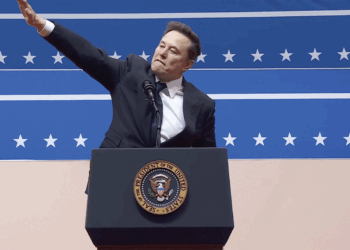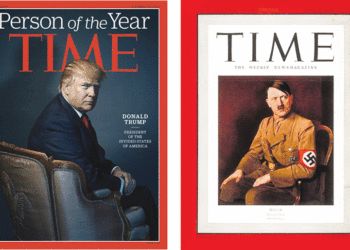Jews in France did not have a good year, in 2014. And 2015 is shaping up to be much worse.
In last week’s carnage perpetrated by three lunatic adherents to radical Islam, 17 souls were murdered. The Jan. 7 massacre at Charlie Hebdo, the satirical tabloid newspaper in Paris — where eight staff members (including Jewish cartoonist George Wolinski and Jewish columnist Elsa Cayat), and four others, including two police officers, were gunned down — shocked the world.
Then, on Jan. 9, Amedy Coulibaly, a comrade of Chérif and Saïd Kouachi, the Charlie Hebdo gunmen, stormed Hyper Cacher, a kosher supermarket in east Paris, and murdered four Jews.
In a phone conversation with a Parisian TV station during the police siege of the store, Coulibaly, who also had killed a female police officer in Paris on Jan. 7, admitted that he was in league with the Kouachi brothers. Further, he told the BFM TV channel that he acted to defend “oppressed Muslims,” especially in Palestine, so he purposefully targeted Jews.
The three killers are dead; but France, Europe and much of the world are grappling with the ramifications of the tragic events that transpired in Paris last week.
“Let’s be clear: France is under assault,” writes Simone Rodan-Benzaquen, director of the American Jewish Committee’s Paris office, in a piece included in this week’s AJW print edition. “The enemy is in our midst. Extremists, faithful to a brand of Islam that celebrates violence and martyrdom, have no respect whatsoever for the core, longstanding French values of democracy, pluralism, freedom of expression — and, indeed, for life itself.”
The Kouachi brothers proclaimed that they acted to avenge the prophet Muhammad, in the face of caricatures published by Charlie Hebdo. The newspaper had a tradition of publishing cartoons of the revered prophet of Islam, who was often depicted in sexual and buffoonish poses.
This week, Charlie Hebdo did it again.
The newspaper, which reportedly had a recent press run of 60,000 copies, announced that they would publish 3 million copies, translated into several languages, this week. And the cover depicts Muhammad, again, tearful, holding a sign that reads “Je suis Charlie (I am Charlie).” The caption, at the top of the cartoon, proclaims, “Tout est pardonné (All is forgiven).”
“One of Egypt’s highest Islamic authorities, Dar al-Ifta, warned that the new cartoon, depicting the Prophet Muhammad, would exacerbate tensions between the secular West and observant Muslims,” reported the New York Times, on Tuesday. “Death threats circulated online against the surviving staff members of the newspaper, Charlie Hebdo.”
As a newspaper publisher, the idea of increasing circulation 5,000 percent from one issue to the next seems fairly incredible. But, of course, this windfall for Charlie Hebdo comes at the cost of having its editor, cartoonists and other staff members slaughtered. The newspaper offices are a crime scene, so the surviving staffers have been working in donated quarters, watched over by a phalanx of armed guards.
Not long after the Charlie Hebdo massacre, and the proliferation of the hashtag #JeSuisCharlie (I Am Charlie) across social media, pundits began to question the editorial slant of the newspaper. Basically, the critics pointed out that Charlie Hebdo often published tasteless and racist cartoons, in addition to its regular diet of blasphemous images. The newspaper offices had been firebombed, in 2011, then the paper went right back to mocking the prophet Muhammad. So, this week’s edition is not a departure from past practices.
In the United States, the First Amendment protects freedom of expression and freedom of the press. Short of immediate incitement to violence, this nation sanctions a free speech free-for-all: We allow the floating of any kind of lunatic idea, no matter how benighted or racist. Of course, we also are free to gainsay stupid speech — and there are possible consequences for libelous and slanderous comments.
The First Amendment, however, does not extend beyond the boundaries of the U.S., and in many European countries there are laws against hate speech and Holocaust denial. People are prosecuted and put in prison for expressions that are deemed beyond the pale of social norms.
In any case, most of us living in the civilized world do not approve of radical Islamists, or any other political extremists, acting as the self-appointed guardians of speech and executing those who they believe have trespassed.
At the same time, while we have the freedom to speak our minds, the power of the press behooves us to behave responsibly. This does not mean that we always are trying to gauge the public mood before publishing anything. Newspapers naturally provoke controversy, if they are any good; but gratuitously offending individuals or groups is pointless.
For example, the AJW has reported on the controversy over the Muhammad cartoons, since the Danish newspaper Jyllands-Posten published 12 editorial cartoons, on Sept. 30, 2005. After a group of Danish imams began circulating dossiers that contained the cartoons and other materials, riots began to break out across the Muslim world. Around 200 people were killed, according to the New York Times.
I have considered publishing one of the Muhammad cartoons, as an illustration accompanying a news story, and as a statement of solidarity with those under the gun for exercising their freedom of expression. In the end, I concluded that doing so would only offend Muslims in the community, and there is already enough bad blood between Jews and Muslims, largely stemming from the Israeli-Palestinian conflict far from here.
Reading coverage of the tragedies in Paris, from numerous sources, I noted, in a column by J.J. Goldberg in the Forward, that a Jewish newspaper in Calgary, Canada, did publish a Muhammad cartoon.
Richard Bronstein, editor of the Jewish Free Press, published a Muhammad cartoon, in 2005, when the controversy broke out in Denmark. We talked by phone this week.
After the newspaper published the cartoon, a local imam lodged a religious defamation complaint with the Alberta Human Rights Commission. After a mediation session, Bronstein said that the imam withdrew the complaint.
However, that was not the end of the matter. In 2010, Bronstein received some credible death threats, and he had to leave his house and close the newspaper for two weeks. He received protection from the Royal Canadian Mounted Police (RCMP), the Canadian version of the FBI.
Bronstein said that he doesn’t regret publishing the Muhammad cartoon. In the aftermath of the Charlie Hebdo massacre, he comments, “I haven’t heard one Muslim say that publishing the cartoons is justification for murder.”
He thinks that viewpoints, in the Muslim community, have matured since the 2005 controversy in Denmark.
Muslims today acknowledge, according to Bronstein, that “there’s a difference between expressing your opposition to something in society, such as how you’re portrayed — and you do that through normal discourse and discussion — and there’s another thing, to commit atrocities.”
How about a Muslim journalist’s opinion?
Myriam Francois-Cerrah, in a brief article in The Guardian (London) this week, admits that Charlie Hebdo’s raunchy and irreverent brand of satire is not to her taste.
“My kind of satire is the type that punches up, the type that holds the powerful to account and mocks authority — there is a huge difference between mocking the clerical class that used to rule France through privileged access to power and mocking the faith of the descendants of immigrants largely locked out of power and experiencing acute levels of prejudice,” writes Francois-Cerrah.
However, Francois-Cerrah does not categorically condemn all satirical depictions of the Muhammad.
“One of my favorite caricatures by Charlie Hebdo was one featuring the prophet Muhammad being beheaded by an extremist. That image perfectly captures the hijacking of the faith by radicals and the truth that Muslims are the primary victims of terrorism and the main target of retaliatory violence.”
— Mordecai Specktor / editor@ajwnews.com
(American Jewish World, 1.16.15)



















